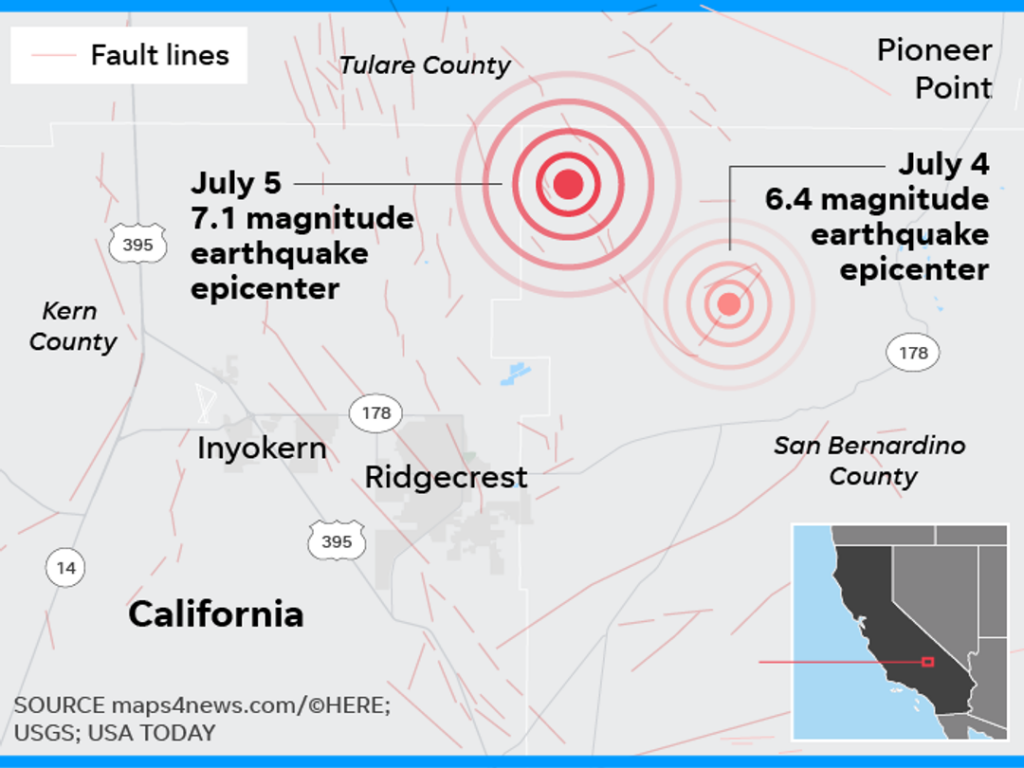A magnitude 4.3 earthquake shook the eastern San Francisco Bay area at 1:11 p.m. Tuesday.
Four minutes later, a magnitude 4.5 quake hit near Ridgecrest, which, earlier this month, was rattled by a pair of massive temblors, including the most powerful shaker (a magnitude 7.1) to strike California in 20 years.
And, then, at 1:24 p.m., the Bay Area felt another rumble, this time a magnitude 3.2, again centered near Blackhawk, an unincorporated community east of Oakland. It was originally reported as a magnitude 3.5.
Does this mean “The Big One” is coming? Don’t panic, the U.S. Geographical Survey cautioned.
“This specific sequence of earthquakes – the ones in Ridgecrest and the ones in Blackhawk – are not indicative that ‘The Big One’ is coming,” said Rafael Abreu, a geophysicist with the USGS National Earthquake Information Center in Colorado.
But still, I do!
Were the earthquakes connected?
No. The earthquakes near Blackhawk are a different set from the aftershocks following the 7.1 Ridgecrest event on July 5.
They also occurred near different fault lines. About 270 miles lies between the centers of the quakes in northern and southern California.
The Ridgecrest quake occurred near the Little Lake fault zone, according to USGS maps. Geophysicists recorded the Blackhawk quakes near the Greenville fault zone. Neither are connected and both have a slip rate of 1 to 5 mm a year.
By comparison, the San Andreas Fault, which serves as a tectonic boundary between the North American and Pacific plates, moves more than 5 mm per year. California has gone past the average time between large earthquakes along the San Andreas, leading some to say the area is overdue for a massive temblor.
Is California experiencing an unusual number of earthquakes?
This is all normal, according to the USGS.
“We’re having quakes exactly where, geographically speaking, we’d expect these quakes to happen,” Abreu said. “And we’re having the amount of earthquakes we’d expect to see.”

In terms of magnitude and number of quakes, Abreu said the Ridgecrest sequence has actually decayed faster than expected, but the variation isn’t unusual for the geological setting.
Four other quakes registering magnitude 3.5 or greater occurred in the Ridgecrest area Tuesday: one in the early morning, one in the afternoon, and two at night.
What are the aftershock predictions?
Northern California has a 4% chance of one or more earthquakes stronger than magnitude 4.3 over the next week, the USGS said. Smaller earthquakes are likely over the same time period, with up to five magnitude 3 or higher aftershocks predicted near Blackhawk.
For the Ridgecrest sequence, the USGS last updated its predictions on Monday. Geophysicists recorded 524 magnitude 3 or higher earthquakes and five magnitude 5 or higher earthquakes since July 5. The first group are strong enough to be felt while the second can do damage.












